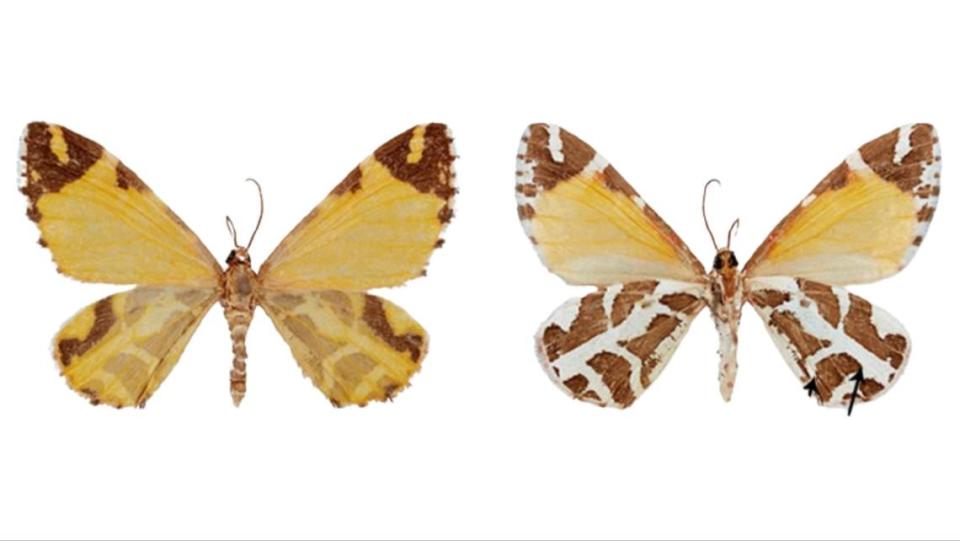Creature with ‘golden wings’ discovered as new species, with Kansas 8th graders’ help
Scientists visiting a woodland area of Mexico in 1965 captured a delicate creature with colorfully patterned wings. The animal turned out to be a new species — but it would take almost 60 years, a dedicated researcher and a group of eighth graders in Kansas to discover that.
As the COVID-19 pandemic shut down classrooms around the world, Isaac Russell, a teacher in Topeka, came up with an idea to keep his eighth-grade students engaged while learning from home. He contacted Tanner Matson, a moth researcher, with the idea, Matson wrote in a study published Dec. 14 in the European Journal of Taxonomy.
Matson was studying a group of moths from Mexico that had been “historically overlooked,” the study said. These Stamnodes moths were known for their “ornate” patterns and selective feeding behavior.
Russell’s interested students could join a research team to learn about “evolutionary biology, systematics, biodiversity, Mexican biogeography, and the process of describing new species,” Matson wrote.
At the end, the “small group” of eighth-graders “came together and named a new species that Tanner Matson had discovered,” Russell wrote in a Dec. 14 Facebook post.
The students named the new species Stamnodes aumatlapalli, or the “golden wings” moth, the study said. “Aumatlapalli” is a combination of the Latin word for “gold” and the Aztecan Nahuatl word for “wings.”

Discover more new species
Thousands of new species are found each year. Here are three of our most eye-catching stories from the past week.
→ ‘Limbless’ creature found digging beneath rotten tree in Vietnam
→ Four-eyed creature with ‘spherical’ sex organ found in China
→ Sea creature with 328 tentacles found suctioned to rock in Japan
The “golden wings” moth has wings that can reach about 0.6 inches in size, Matson wrote. Photos show the new species. Seen from above, the moth’s wings are a creamy gold coloring with brown tips. Seen from below, its wings have an almost leopard-like print made of irregular brown and white blotches.
“Golden wings” moths live in “pine-oak woodlands” and have been found in six Mexican states, the study said. Their distribution area stretches from Tamaulipas state along the Texas-Mexico border to southern Guerrero state along the Pacific coast.
Matson discovered 34 preserved specimens of the “golden wings” moths in archive collections. The new species was identified by its pattern and genitalia, the study said. Matson also analyzed its DNA but could not compare it to related moths because of a lack of data.
Russell’s former students who helped name the new species are “about to graduate,” he wrote on Facebook.
“Thank you, Tanner, for sharing such a cool opportunity and experience with our students,” Russell said.
Matson also discovered 15 more species of Stamnodes moths, the study said.
Neither Matson nor Russell immediately replied to McClatchy News’ request for comment on Dec. 15.
High school student cracks open rock during class — and discovers new species in Japan
‘Cryptic’ 3-foot-long creature found in mangroves of Myanmar. It’s a new species
8-eyed creature — with personality like ‘Satan’ — discovered as new species in Ecuador

